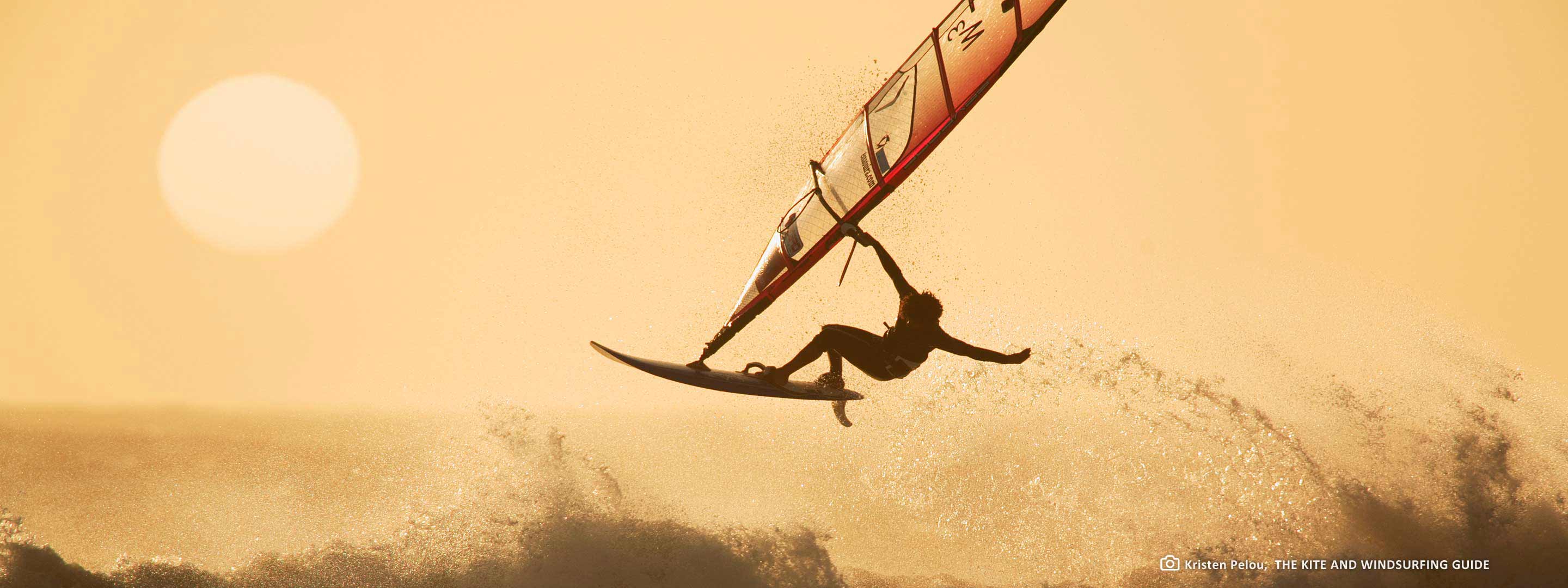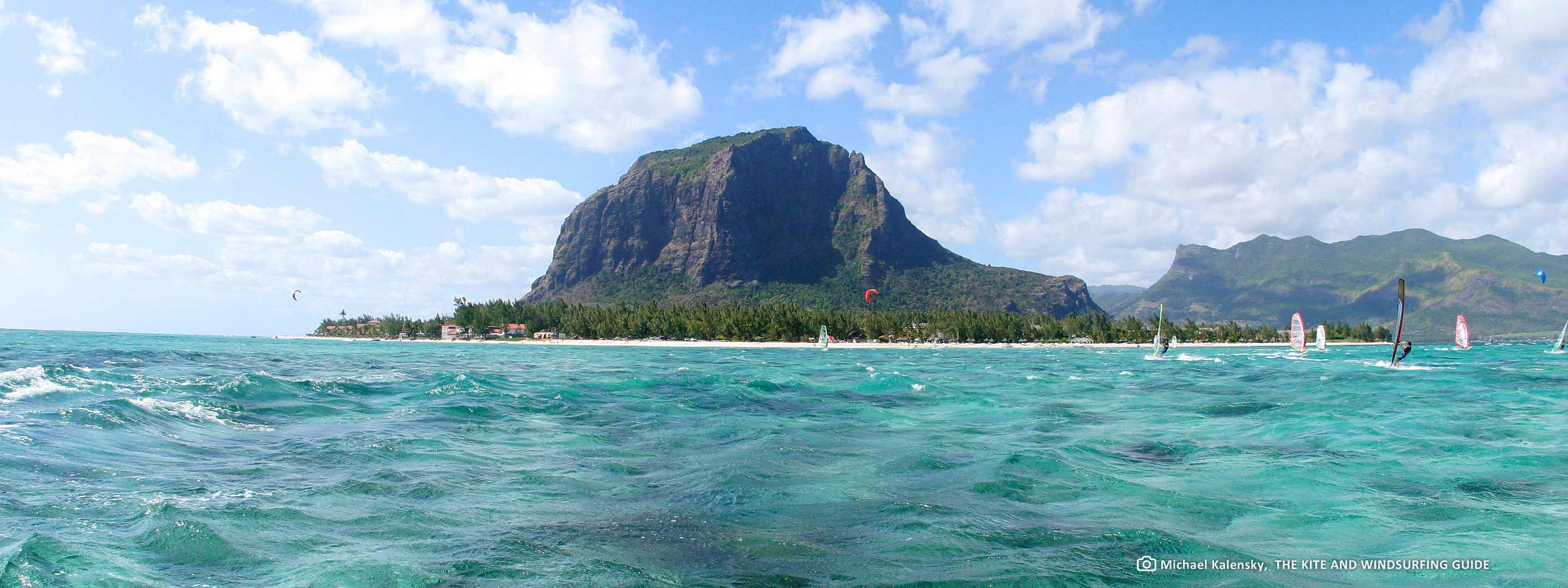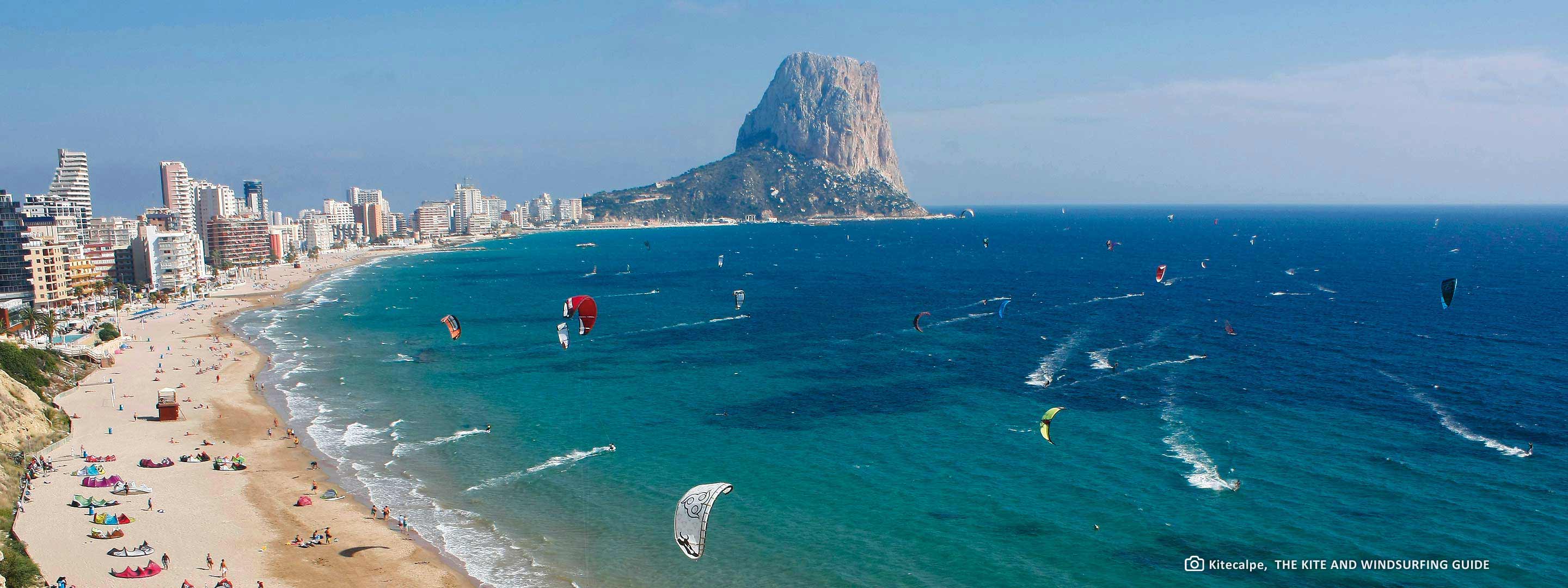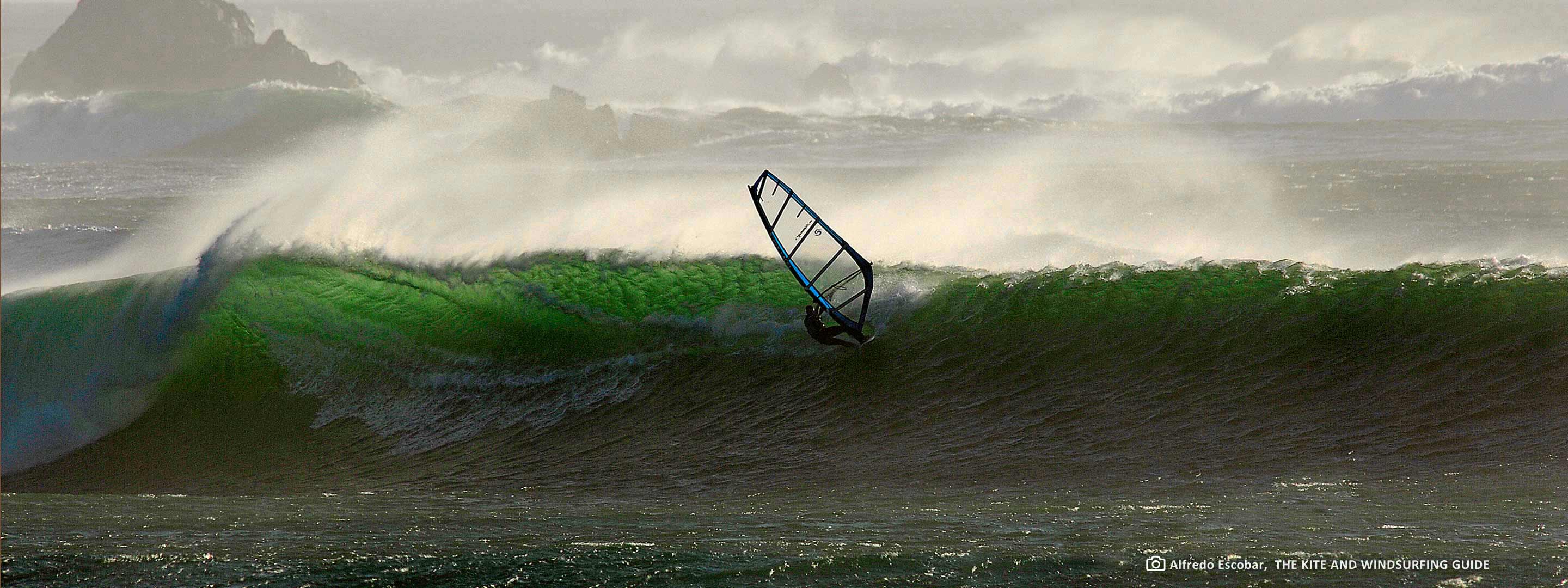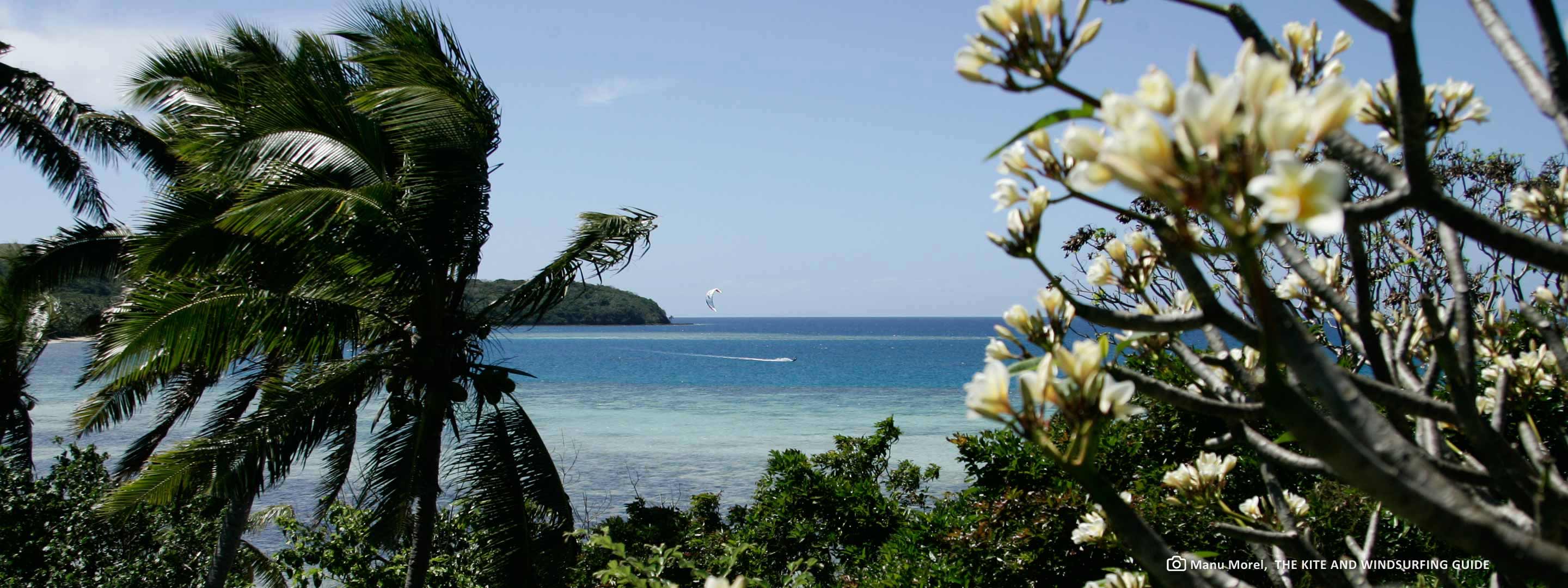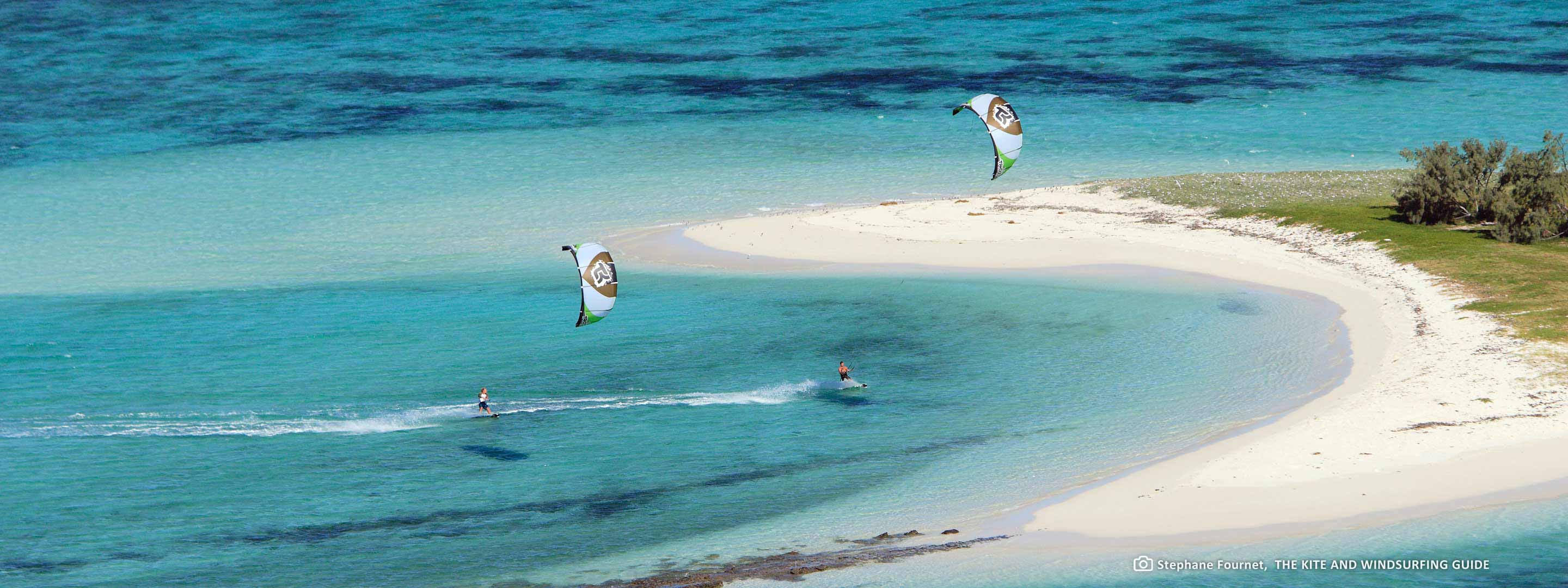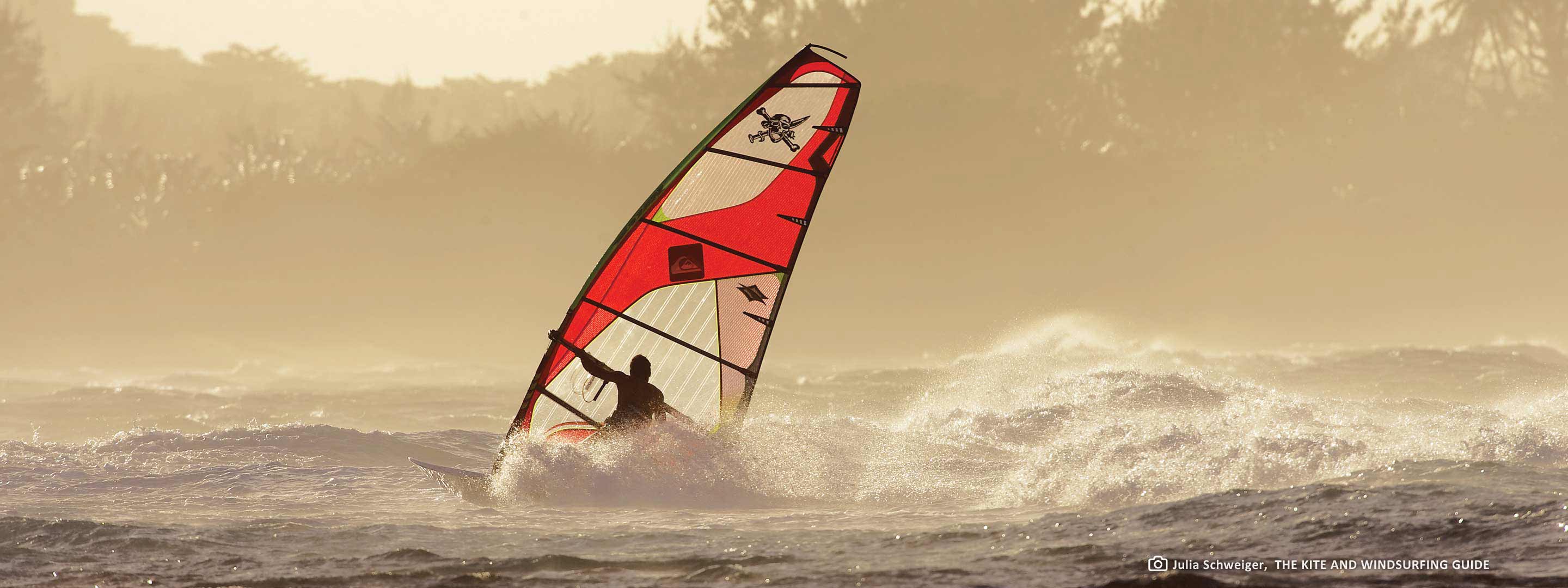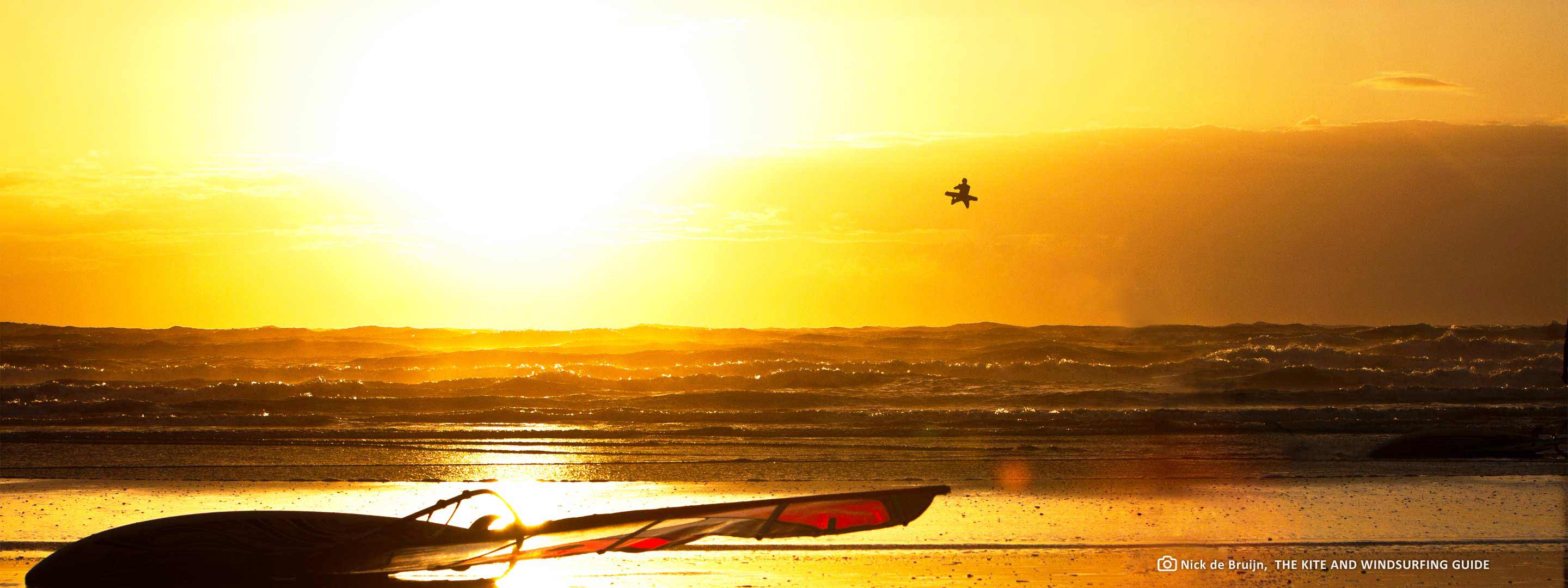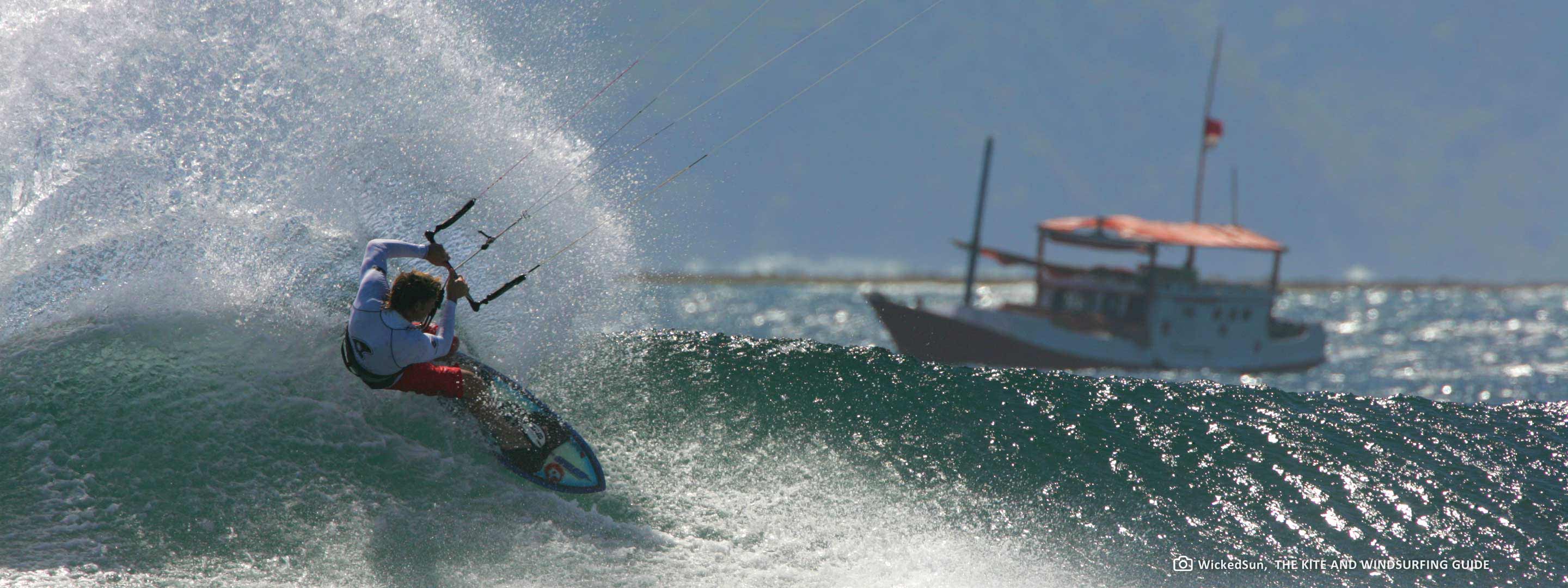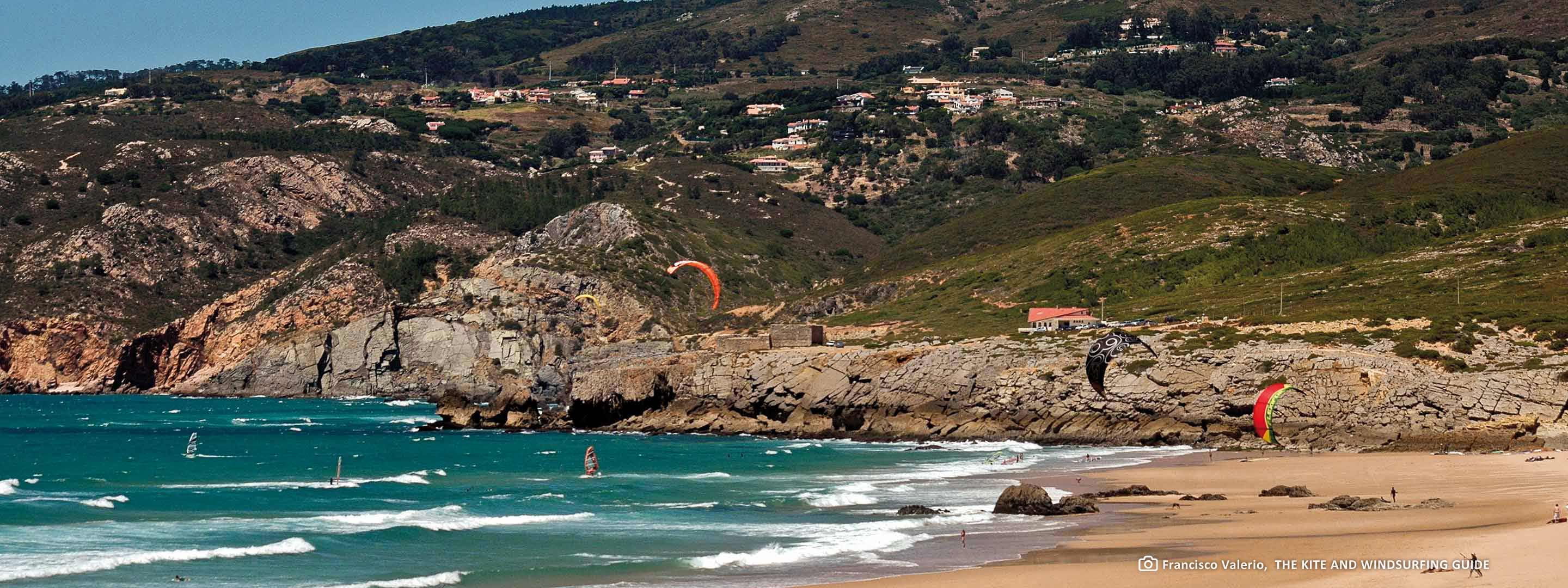Teahupoo
Tahiti
Auszug aus dem KITE AND WINDSURFING GUIDE:
One of the few beach-breaks, Papenoo L'Embouchure is a favourite surf-spot in N swell, and there's enough sandy beach on the river estuary to launch a kite or windsurfer in easterly winds. The locals mainly visit to launch for the downwinder to Motu Martin, the island’s most popular venue offering beginners and freestylers somewhere safe to play. A small island and reef keep the sandy bay flat and hold the currents in check. On the reef offshore, 2m N swells produce a right-hander offering a short ride on the shoulder. The venues for south-east wind and SW swell begin at Taapuna where a large lagoon offers freeride inside the reef while wave-heads can try their luck on a fast left-hander in the channel. The ride follows the reef’s edge and in any swell there are usually a couple of surfers sitting on the peak. You’ll find more depth under your fins on the reef facing Musée de Tahiti at Sapinus where SW swells produce the island’s longest wave. Dolphins often escort morning trips to the reef, but the rocky little launch from a beach on the cape is particularly challenging with a kite. In rare northerly winds – otherwise useless on Tahiti – try the right-hander in the channel, which is much shorter than the left opposite. The caves at Maraa are marked on every tourist map, but out in the channel the super-fast left-hander finishing in a snappy bowl is lesser-known as it’s 1.5km offshore so not easy to see from the road. Launch from the scrap of beach at the canoe club – it’s quite a challenge with a kite, but that’s barely a warm-up for the main event. If the waves outside are too heavy either play around in the wide lagoon or drive on to Baie Phaeton to rig in peace on the green and launch easily into the shallow bay. It often blows here when everywhere else is calm as easterly wind accelerates through a funnel between the island’s two sections, this does make it gusty though. Follow the coast-road south down the smaller 'Tahiti Iti' peninsula and the reef opens up particularly wide near 'km 9'. The locals call the channel 'La Grande Passé' and surf the left-hander at Vairao in S-SW when nowhere else works. The channel's size means the wave isn’t so hollow, but that's not really a drawback. The end of the coast-road at 'km 0' has a unique reputation. Whoever ventures onto the water here carries the torch. Teahupoo is one of the most challenging waves in the world where even the best wear a helmet and bear scars on their backs. Juggernaut S-SW swells from the depths of the South Pacific suddenly encounter the jutting reef, forming super-fast barrels with metre-thick lips. The toboggan run down-the-line is incredibly photogenic, but surprisingly short and follows razor-sharp coral. Every fall has consequences here – unless surfsports pay your bills, think long and hard about it. Just launching from the small point is tricky enough: no space and extremely gusty wind. And then sailing back to any of the sheltered bays is impossible, so the obligatory safety boat needs to double as a ferry.
